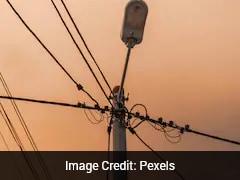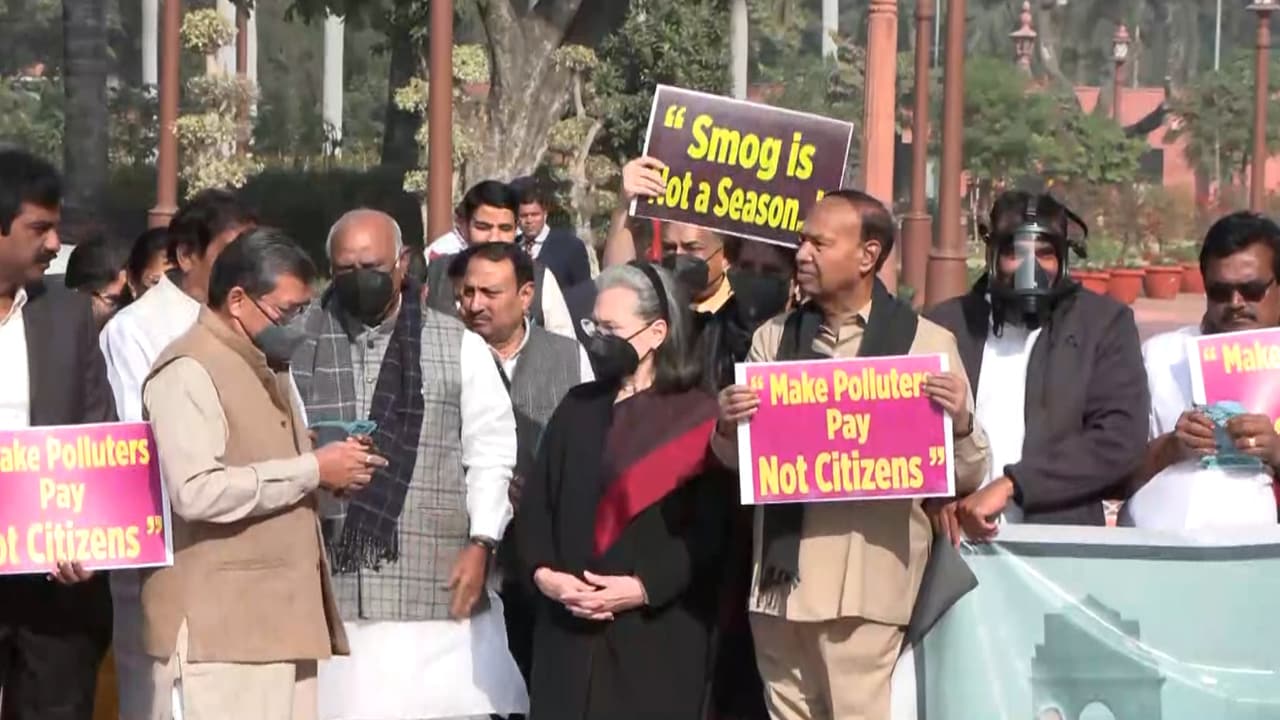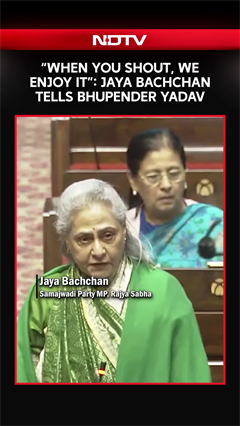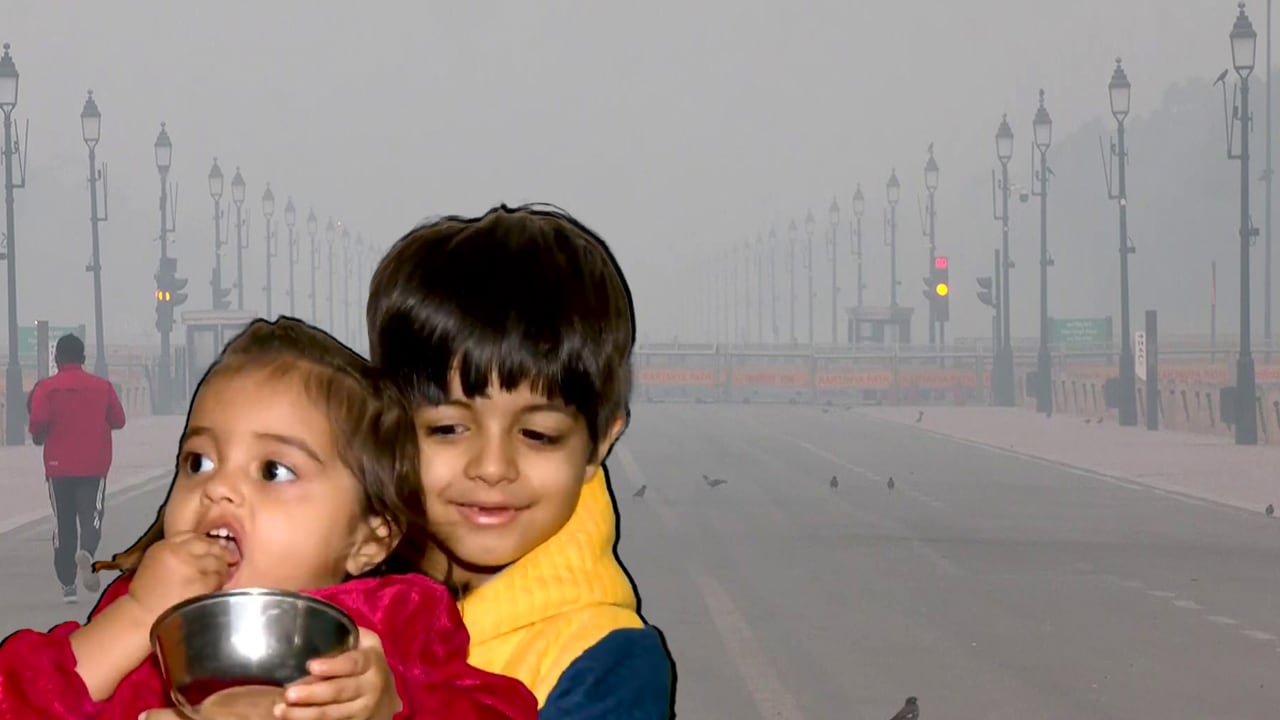- Home/
- Delhi's Winter Atmosphere Unsuitable For Cloud Seeding: Report
Delhi's Winter Atmosphere Unsuitable For Cloud Seeding: Report

Delhi's winter atmosphere is climatologically unsuitable for consistent cloud seeding due to a fundamental lack of sufficient moisture and saturation, particularly during the peak pollution months of December and January, according to an IIT, Delhi report.
The report, based on a comprehensive analysis integrating climatological data (2011-2021) by IIT's Centre for Atmospheric Sciences, comes against the backdrop of the Delhi government conducting two cloud-seeding trials in Burari, north Karol Bagh and Mayur Vihar in collaboration with IIT, Kanpur, but there was no rain. The institute had earlier conducted successful trials in Kanpur in 2017-18, but this was the first such experiment in the Delhi-National Capital Region (NCR) region.
"While cloud seeding is theoretically feasible under specific atmospheric conditions, during Delhi's winter, its practical utility as a consistent and reliable air-quality intervention is constrained. The necessary atmospheric conditions are rare and frequently coincide with natural rainfall, limiting the potential marginal gain," the report said.
"Even when successful, induced rainfall would likely provide only a brief respite (typically one to three days) before pollution levels rebound. Given the high operational costs, the scientific uncertainties inherent in aerosol-laden environments, and the absence of any impact on underlying emission sources, cloud seeding cannot be recommended as a primary or strategic measure for Delhi's pollution management.
"At best, it could serve as a high-cost, tactical intervention during declared air-quality emergencies, contingent upon a forecast meeting stringent MSI-based suitability criteria. Ultimately, the study underscores that sustained emission reduction remains the best viable and durable solution to Delhi's chronic air pollution crisis," it added.
The report noted that decadal analysis (2011-2021) indicates that the core winter months of December and January coincide with both the most severe pollution episodes and the driest climatological conditions.
"There is a fundamental lack of sufficient moisture and saturation during the peak pollution months (December-January), coinciding precisely when intervention is most needed. While Western Disturbances (WDs) are the primary drivers of potential seeding conditions, viable 'windows of opportunity' are rare, confined to specific anomalous events.
"Even on days identified as potentially promising (e.g. cloudy WD days without rain), a multi-criteria Moisture Suitability Index (MSI) indicates they frequently lack the necessary combination of moisture depth, saturation and atmospheric lift required for successful seeding," it said.
The study highlights complexities arising from Delhi's high aerosol environment.
High aerosol loading [characterised by high Aerosol Optical Depth (AOD)] is associated with increased cloud cover and higher liquid/ ice water content, particularly during rainy conditions.
However, favourable microphysical conditions (low cloud base, high water content) often coincide with naturally occurring precipitation, limiting the potential added benefit of seeding. The vertical separation between the shallow aerosol layer (below 2 km) and typical seedable cloud layers (2-5 km) also presents significant operational targeting challenges.
Thermally, glaciogenic seeding appears potentially viable during core winter, but operational feasibility seems restricted to existing rainy conditions.
Regarding pollution removal, the analysis confirms that heavy natural rainfall is highly effective (>80-95% washout for PM2.5, PM10, NOX), while light rain offers minimal impact. Importantly, even after significant washout, air quality improvements are short-lived, with pollutant concentrations typically recovering to pre-event levels within one to five days due to persistent emissions.
Ozone concentrations often increase post-rainfall. While dry WDs provide some limited ventilation, significant concerns remain regarding the environmental/ health impacts of seeding agents like AgI, high operational costs and scientific uncertainties.
"Given these constraints, cloud seeding cannot be recommended as a primary or reliable strategy for Delhi's winter air pollution management. It should be viewed, at best, as a potential high-cost, emergency short-term measure, contingent on stringent forecasting criteria.
"The study underscores that sustained emission reduction remains the most viable and necessary long-term solution," the report said.
(Except for the headline, this story has not been edited by NDTV staff and is published from a syndicated feed.)
also read
"Mad Traffic And Honking": Kanpur Man Shares Challenges He Faced After Moving Back To India From Ireland
Edited by Astitva RajWhere India Found Clean Air This Week: Top 5 Cities Ranked
Edited by Srishti Singh SisodiaWhich Are India's Top 10 Polluted Cities? UP Accounts For 6 On The List
Press Trust of India
Latest Stories
- Edited by Astitva Raj | Sunday December 07, 2025
His post clearly explains the various daily challenges he faced after moving to India from Ireland.
- Edited by Srishti Singh Sisodia | Sunday December 07, 2025
These cities serve as examples of how natural surroundings and effective pollution control can contribute to cleaner air.
- Press Trust of India | Sunday December 07, 2025
Ghaziabad was the most polluted city in India in November, with a monthly average PM2.5 concentration of 224 microgram per cubic metre and air quality remaining above the national standards on all 30 days, according to a new analysis.
- Reported by Ishika Verma | Saturday December 06, 2025
New Delhi: Two days after Chief Minister Rekha Gupta held a high-level review meeting, the Delhi government on Saturday formally notified the constitution of a new Expert Group on Air Pollution Mitigation and a High-Level Implementation Committee.
- Saturday December 06, 2025 , New Delhi
Delhi Chief Minister Rekha Gupta on Thursday claimed that the capital had "celebrated Diwali and maintained air quality."
................................ Advertisement ................................
Latest Videos
Opinion
Blog | Well Done, Delhi. You've Turned Lung Sacrifice Into A Badge Of HonourSaikat Kumar Bose
Monday November 10, 2025Till some years back, Delhiites would ask angry questions to those in power about the capitals annual tryst with toxic air. This has changed. Those in the driving seat dont see the need to answer now.
Opinion | Why Indians Have Just Given Up On Air Pollution CrisisTanushree Ganguly
Friday December 20, 2024While some may argue that people in Delhi are now more aware of air pollution than they were a decade back, my rebuttal would be that awareness does not mean that people are concerned.
Opinion | You Must Outrage Over Filthy Air More Than Once A YearJyoti Pande Lavakare
Tuesday December 10, 2024Delhi welcomed us with monsoon rains and mangos. We were home. Fast forward a couple of years, in the winter of 2012, I found myself in denial about something other parents, mostly expats, were calling toxic air.
Opinion | Delhi's Air Pollution Situation Is Like A Bad MarriageNishtha Gautam
Friday November 22, 2024On a good day, such as today, the AQI reading in Delhi is 407. We are jubilant at the sickly sunshine trickling through the slightly dissipated smog. At least its not 1600.
दिवाली... पराली... सियासी जुगाली!Ashwini kumar
Monday November 18, 2024दिल्ली-एनसीआर में प्रदूषण का समाधान तो आज तक मिला नहीं. हर साल चिंतित होकर हम-आप सांसों की तकलीफ के साथ-साथ दिल और ब्लड प्रेशर के मरीज भी क्यों बनें?


















